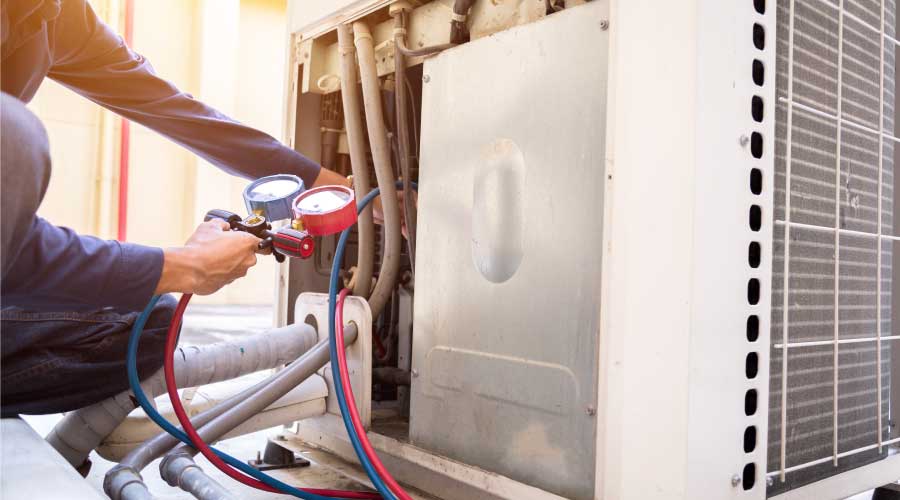Temporary Cooling: Hot-Button Issue
Maintenance and engineering managers dread that hot summer day when they receive a call at 5 a.m. alerting them that part of their facilities' cooling system has malfunctioned and cannot cool part of a building. As institutional and commercial facilities have come to rely more heavily by the day on heat-generating technology — think of servers in data centers, as one example — it is increasingly important for managers to understand the different types of emergency and portable cooling units on the market, including the benefits and drawbacks of each option.
Exploring Options
In preparation for mechanical cooling failures in buildings, portable cooling remains a key element in providing temporary and emergency cooling to key areas and operations. Three main types of technology available for managers looking to use portable cooling as a temporary system are: fans, evaporative cooling, and direct expansion (DX).
Fans do not actually reduce a room's temperature — unless they blow cool air from one room to another — but they still can be useful. By moving air, fans can take advantage of occupants' ability to cool through normal evaporative processes, i.e. sweating. Unfortunately, fans have only a limited effect on equipment because they do not actually remove heat from a space.
Evaporative coolers, which are colloquially known as swamp coolers, can serve as a good, low-cost cooling method and can be portable. Evaporative coolers saturate a filter media with water, then use a fan to draw air through the filter. The air cools as the water absorbs the heat of the air and vaporizes. This process reduces the air temperature but also increases the relative humidity of the outgoing air.
The primary advantage of evaporative coolers is that they tend to have low initial costs. They also are relatively inexpensive to operate and maintain. Evaporative coolers have several distinct disadvantages. They require a constant supply of water because the reservoir is drained during the evaporation process.
They also can cause water leaks into a space if technicians overfill or damage the reservoir, and they can raise the relative humidity of the space being cooled. This situation might make people in the space uncomfortable or, in the case of server rooms or process equipment, raise the space's relative humidity higher than acceptable limits.
Another major drawback of evaporative coolers is that they tend to work well only in areas that have a low relative humidity. Their performance tends to falter at higher temperatures and higher relative humidity, due to their dependence on the wet-bulb temperature, which is affected by temperature and relative humidity.
DX air conditioners are the most common form of portable cooling and are generally the units people think of when requesting portable cooling. Essentially, a portable DX cooler uses the normal air conditioning cycle to cool a space.
In this cycle, it compresses and cools refrigerant, then expands it again to move heat from one space to another — typically, to the outside or a plenum space. Portable DX cooler units are popular because they plug in and duct the exhaust air and can rapidly cool a space without increasing humidity.
The biggest disadvantages of portable DX cooling systems are that they tend to be expensive to operate, can be extremely noisy, and might not operate in all areas. They can be expensive to operate because they use electrically driven compressor motors that run constantly.
All DX units must have some sort of exhaust that removes the heat from the compressor and from hot refrigerant. Typically, they duct this heat through flexible ductwork so they can exhaust it to the outside or to a plenum space, where it can be conditioned or removed from the immediate area of the space being cooled. If there is no area to exhaust this heat, the facility will not be able to use a DX portable cooler. Managers should be aware that it also is necessary to pipe condensate from moisture extracted from the air to an appropriate drain to prevent damage to interior finishes.
Related Topics:














